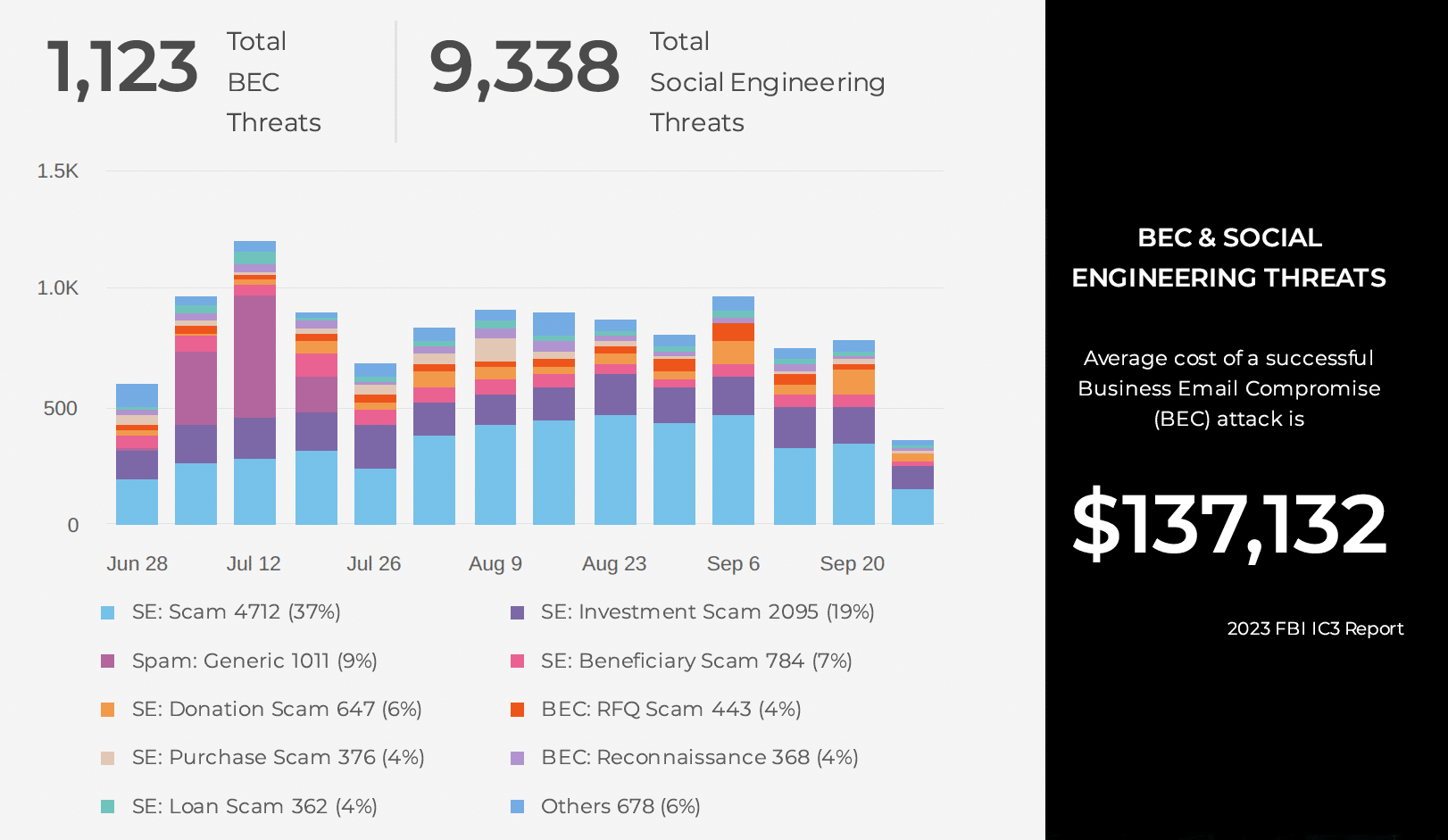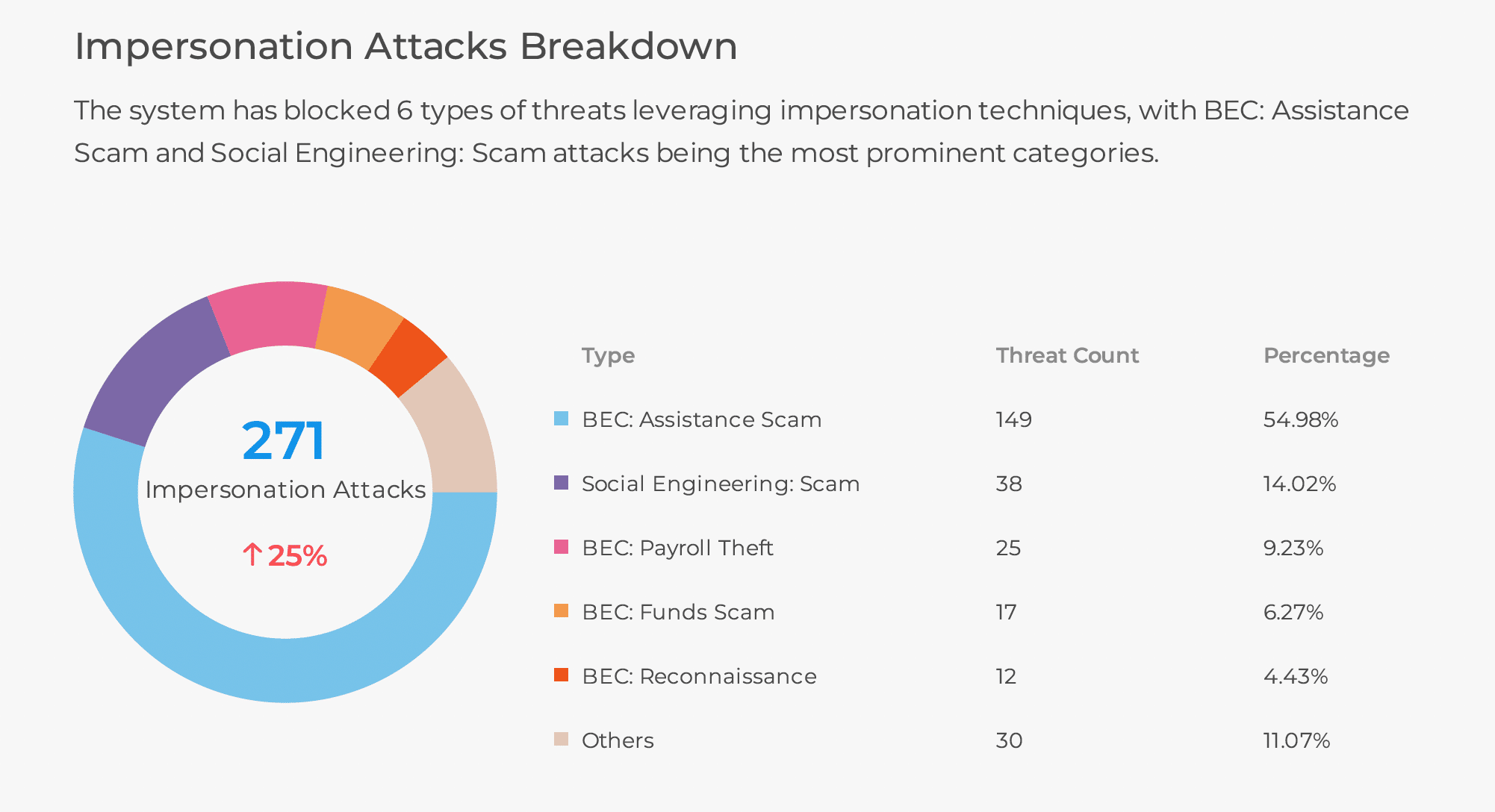
Your organization will most likely face AI based threats in cybersecurity at some point this year. And as such, you can’t rely on outdated risk assessment methodologies that struggle to keep pace with the new highly sophisticated AI phishing techniques used for Business Email Compromise (BEC), smishing, link and file-based attacks. Threat actors now use generative AI social engineering methods for fast-moving BEC attacks covering executive impersonation, supplier invoice fraud, purchase scams, payroll theft, tax forms, and many others.
The cybersecurity health check process has long been regarded as an essential tool for risk assessment and management. Its current format, however, fails to deliver meaningful results in the face of today’s rapidly evolving threats.
In the past, a health check provided actionable insights leading to improved security posture, but the accelerating velocity of the security landscape has rendered it ineffective in identifying vulnerabilities before they are exploited. Many enterprises find that their risk assessment results identify threat events that have already occurred to determine how to fine-tune their security posture going forward. This is often weeks or even months too late. The fast- moving threat landscape means that threats are evolving at a rapid pace, so observing your organization in real-time is the only way to ensure you are accessing the current threat surface and not solving for yesterday’s threats.
Cybersecurity Attacks are Moving Faster Than Defenses
The traditional approach of relying on security defenders to detect and neutralize threats through annual security audits and manual processes is becoming an exercise in futility.
Security experts today have seen that “point” solutions—those targeting specific threats and performing specialized tasks—have become outdated as AI assumes a central role in the emerging “AI-versus-AI” cybersecurity landscape.
In today’s sophisticated threat environment, you can’t rely on traditional threat assessments to effectively compete against machine learning and artificial intelligence.
Addressing the AI Threat
Threat actors are using AI to improve attack success, and yet this is one of the most largely unchecked developments in cybersecurity. Deploying AI in “attack mode” not only amplifies the scale and speed of threats, but threat actors can also train their AI to circumvent defensive measures using free generative AI tools like the ubiquitous ChatGPT. This has given even mediocre and amateur threat actors an easy way to perform substantial online malicious activities.
Phishing, in particular, has evolved beyond credential theft to encompass business email compromise (BEC), social engineering, rogue software, scareware, and other scams delivered through multiple communication channels, including cloud email, mobile, and web messaging apps. Threat actors are now using AI to easily exploit tons of business and home applications, including those for email, SMS, text messages, WhatsApp, Facebook, LinkedIn, Slack, Zoom, Box, collaboration platforms, other types of social messaging, gaming, and the list goes on.
What’s more, generic and untargeted shot-gun phishing attacks have transformed into highly targeted zero-hour spear phishing, smishing, vishing, and as mentioned earlier BEC attacks, especially in situations where enterprises conduct wire transfers and have international suppliers. It’s gotten to the point where the FBI IC3 Report listed smishing, BEC, and credential phishing as the top three threats in 2022, responsible for $10.3 billion in losses.
Phishing’s Proliferation
Many cybersecurity companies rely on established phishing URLs and domains to minimize attacks. This data, however, often does not accurately and rapidly detect new and evolving threats. On the other hand, AI and machine learning (ML) cybersecurity solutions focus on behavioral analysis of content to identify threats that are missed by human forensics, URL inspection, and domain reputation analysis.
Artificial intelligence is the most effective tool to counter AI-driven attacks for two primary reasons. First, AI/ML uses computer vision, natural language processing, relationship graph and contextual analysis, generative AI, file attachment inspections, sender impersonation analysis, and other classifiers to observe, analyze, and contextually understand the threats. Therefore, businesses can swiftly assess billions of websites to determine if they’re malicious before engaging with them. Second, AI emulates human cognitive reasoning, continuously learning and responding accurately without human intervention. In essence, it acts as an always-on, real-time security risk assessment.
Larger organizations have cautiously adopted generative AI and machine learning, and enterprises of all sizes can benefit from AI to combat AI-driven attacks. Cybersecurity risks are not solely dependent on company size. What’s more, AI offers instantaneous protection against attacking AI even before it is deployed.
This trend has made the traditional cybersecurity health check obsolete.
The New Cybersecurity Health Check – Observability
We should all be curious about the effectiveness of an organization’s current posture as it relates to targeted phishing attacks. As such, we encourage you to see how vulnerable and targeted you are to the latest zero hour BEC, phishing links, corrupted files and other social engineering attacks in your Microsoft Outlook environment.
To help with this, we’ve come up with a new, free cybersecurity observability offering. Within five minutes of authenticating to the Microsoft email API, we will baseline your environment and discover the historical threats that sit in your email boxes as well as the new threats that miss your current Microsoft, Proofpoint, and Mimecast security over a 30-day period. We will then provide a threat assessment with a report that highlights:
- Current threats in your email.
- Top targeted users.
- Active account takeovers.
Contact us to run this risk free assessment.


